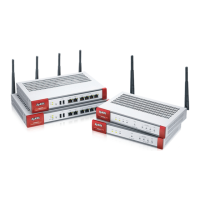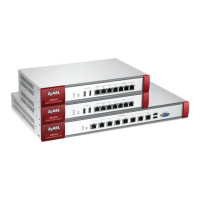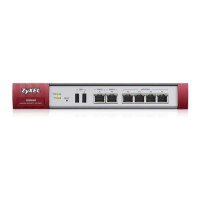Chapter 20 Web Authentication
ZyWALL/USG Series User’s Guide
438
Creating/Editing an Authentication Policy
Open the Configuration > Web Authentication > General screen, then click the Add icon or
select an entry and click the Edit icon in the Web Authentication Policy Summary section to
open the Auth. Policy Add/Edit screen. Use this screen to configure an authentication policy.
Figure 310 Configuration > Web Authentication > General > Add Authentication Policy
The following table gives an overview of the objects you can configure.
Table 161 Configuration > Web Authentication > General > Add Authentication Policy
LABEL DESCRIPTION
Create new
Object
Use to configure any new settings objects that you need to use in this screen. Select
Address or Schedule.
Enable Policy Select this check box to activate the authentication policy. This field is available for user-
configured policies.
Description Enter a descriptive name of up to 60 printable ASCII characters for the policy. Spaces are
allowed. This field is available for user-configured policies.
User
Authentication
Policy
Use this section of the screen to determine which traffic requires (or does not require) the
senders to be authenticated in order to be routed.
Incoming
Interface
Select the interface on which packets for this policy are received.
Source Address Select a source address or address group for whom this policy applies. Select any if the
policy is effective for every source. This is any and not configurable for the default policy.
Destination
Address
Select a destination address or address group for whom this policy applies. Select any if
the policy is effective for every destination. This is any and not configurable for the default
policy.
Schedule Select a schedule that defines when the policy applies. Otherwise, select none and the rule
is always effective. This is none and not configurable for the default policy.

